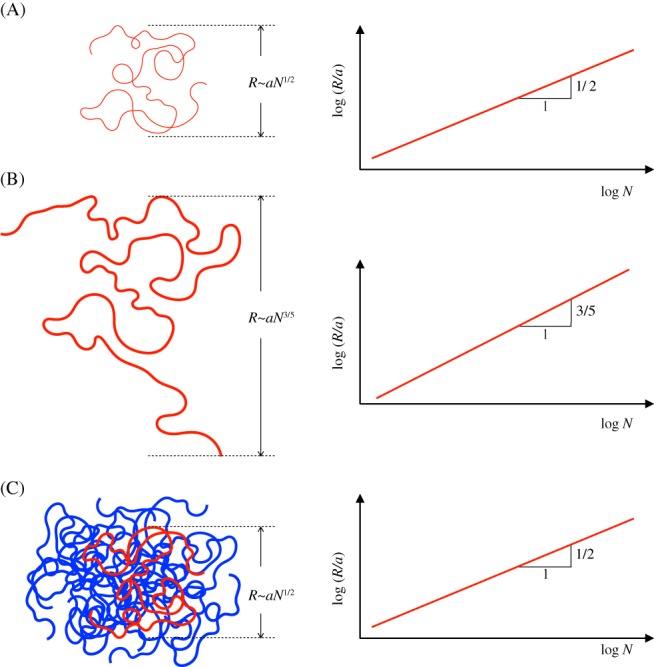Figure 4.

Ideal and swollen polymer coils follow different scaling laws. (A) An infinitely thin ideal polymer chain behaves like a random walk with an overall size that scales like aN 1/2 (“size” here means a quantity with units of length like the end‐to‐end distance or other related quantities that capture the overall extension of the polymer; “scales like” means that when the logarithm of the dimensionless size R/a is plotted vs the logarithm of the monomer number, N, for polymers of different degrees of polymerization the data points would lie along a line of slope 1/2 (see the right plot); a numerical prefactor in front of aN 1/2 does not affect this slope and is thus disregarded, that is, it does not matter whether R/a = N 1/2 or R/a = 10N 1/2, only that R/a ~ N 1/2). (B) The monomers of a real polymer occupy space and this excluded volume leads to a swelling of the chain to a size that scales like aN 3/5. (C) A real polymer in a dense solution of other polymers behaves like an ideal chain (compare (C) and (A)). The reason is that the outward pointing pressure produced by the monomers of the red chain is canceled by an inward pointing pressure of the other chains, shown in blue
